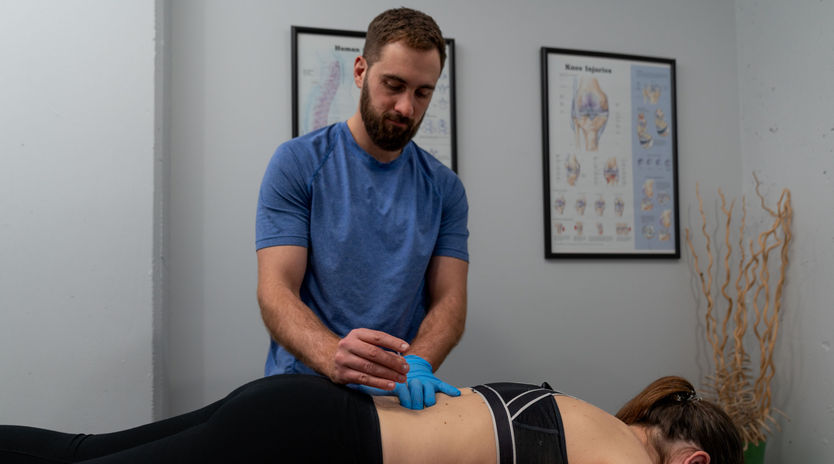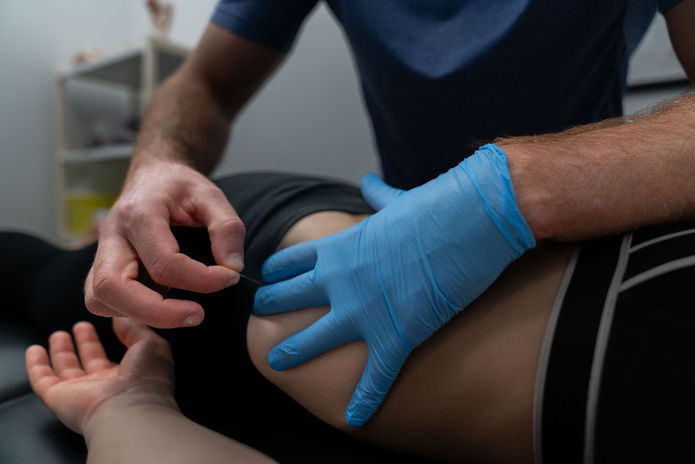
IMS THERAPY
Unlocking the Body's Natural Healing Power
Introduction
In the fast-paced world we live in, it's not uncommon for people to experience chronic pain and musculoskeletal issues. Whether it's due to sports injuries, poor posture, or repetitive strain, these conditions can significantly impact our quality of life. Fortunately, modern medicine offers a wide range of treatments to alleviate such pain, and one approach gaining popularity is Intramuscular Stimulation (IMS) therapy. In this blog post, we'll delve into what IMS therapy is, how it works, and its potential benefits.
What is IMS Therapy?
Intramuscular Stimulation (IMS) is a specialized form of dry needling that targets dysfunctional muscles causing chronic pain and tightness. Developed by Dr. Chan Gunn, a Canadian physician, IMS therapy aims to address the underlying cause of musculoskeletal pain, rather than just treating the symptoms. It is based on the principles of Western medicine and integrates certain elements of Traditional Chinese Medicine (TCM).
How Does IMS Therapy Work?
During an IMS therapy session, a certified practitioner inserts fine, sterile needles into specific areas of tight and painful muscles, known as myofascial trigger points. These trigger points are thought to be hyper-irritable spots within the muscle tissue that can cause referred pain to other parts of the body. The needles create a microtrauma, stimulating the body's natural healing response, and promoting blood flow and the release of muscle tension.
IMS therapy is distinct from acupuncture, as it follows a more anatomical approach, focusing on muscular problems and nerve dysfunction rather than energy meridians.

The IMS Treatment Process
Assessment: A qualified IMS therapist begins by conducting a thorough physical examination and discussing the patient's medical history to identify the trigger points and understand the pain patterns.
Needle Insertion: During the treatment, the practitioner gently inserts thin needles into the trigger points, which may cause a brief, localized discomfort, but it is generally well-tolerated.
Muscle Response: The inserted needles stimulate the muscles, leading to a "twitch response." This involuntary contraction of the muscle indicates the presence of a trigger point and helps release tension in the affected area.
Post-Treatment Care: After the session, the therapist may recommend specific exercises and self-care techniques to maintain the benefits of the therapy and prevent further muscle imbalances.
Benefits of IMS Therapy
Pain Relief: The primary goal of IMS therapy is to alleviate chronic pain caused by myofascial trigger points. By targeting the source of pain, rather than relying solely on painkillers, patients can experience longer-lasting relief.
Improved Function and Flexibility: IMS therapy can help improve muscle function and flexibility, enhancing overall mobility and reducing the risk of future injuries.
Non-Invasive Approach: IMS therapy is non-surgical and minimally invasive, making it a safer alternative to more aggressive treatments for chronic pain.
Holistic Healing: IMS therapy addresses the body as a whole, promoting a holistic approach to healing rather than simply masking the symptoms.
Drug-Free Pain Management: For individuals seeking drug-free pain management solutions, IMS therapy offers a natural alternative without the potential side effects of medications.
Conclusion
Intramuscular Stimulation (IMS) therapy is gaining recognition as a valuable approach to managing chronic pain and musculoskeletal issues. By targeting the root cause of pain through the release of myofascial trigger points, IMS therapy taps into the body's innate ability to heal itself. If you're suffering from chronic pain and are looking for a non-invasive, drug-free option, IMS therapy might be the key to unlocking your body's natural healing power and improving your overall well-being. However, it's essential to consult with a qualified healthcare professional to determine if IMS therapy is right for your specific condition.







